In Ireland, fairy beliefs have been intertwined with the natural world for centuries. Trees, in particular the hawthorn, have played a significant role in Irish fairy folklore and tradition. The hawthorn tree, a small deciduous tree native to Ireland, has been known for its medicinal properties and has been used in folk medicine for centuries. Despite this, it is also associated with superstitions and beliefs that have been passed down through generations. In this article, we will explore the role of the hawthorn tree in Irish fairy beliefs, its properties, and the superstitions and beliefs that have surrounded it for centuries.
The Fairy Forts and Fairy Trees of Ireland
Farmers and landowners have long avoided disturbing these forts, as well as other ancient sites such as Neolithic tombs, stone circles, and standing stones, due to the belief that they are sacred and associated with fairy activity. Folklore has played a significant role in protecting these monuments and trees, including the sacred hawthorn trees which are believed to be associated with supernatural forces and bad luck if damaged or removed.
The Hawthorn Tree:
Traditions, Superstitions, and Properties
The hawthorn tree is a common sight throughout Ireland and has long been revered in Irish folklore and tradition. Its prickly thorns made it useful for hedging to contain livestock, and it was often brought into gardens during springtime to decorate “May bushes” with eggshells and flowers. Children would snack on the new leaves that appeared in spring, which were known colloquially as “bread and cheese”.

Anything associated with faery activity in Ireland was traditionally avoided by the people, who used many rituals to appease them. These trees that grew of their own accord, unplanted by human hands, were those most associated with faery activity. The hawthorn tree was particularly associated with the fairies and was regarded as a tree to be avoided, particularly at night.

In Irish mythology, the hawthorn tree is believed to be a gateway to the fairy realm and is often depicted as a symbol of fear and superstition. According to legend, the faeries would gather around these trees after dark, playing sweet ethereal music, and waiting to abduct any beautiful human who caught their fancy.
Left: The Hawthorn Fairy, by Cicely Mary Barker
Despite its association with superstition and belief in fairies, it also has a number of positive superstitions associated with it, such as the belief that the tree could bestow healing or blessings on those who asked for its favour. As we will see below, the hawthorn ‘rag tree’ has long been revered among the Irish as a tree with healing properties. They will most often be found close to the healing holy wells that were first known and used by the druids. In modern times, the hawthorn tree has been known for its medicinal properties for centuries. Research in the field has confirmed that hawthorn can be used to improve heart health by reducing blood pressure and cholesterol levels. It has also been used to improve circulation and as a natural diuretic in Chinese medicine.
An Old Irish Tradition:
Tying Rags on the Rag Tree for Blessings from the Fairies
The hawthorn tree is a common sight throughout Ireland and has long been revered in Irish folklore and tradition. Its prickly thorns made it useful for hedging to contain livestock, and it was often brought into gardens during springtime to decorate “May bushes” with eggshells and flowers. Children would snack on the new leaves that appeared in spring, which were known colloquially as “bread and cheese”.

Rag trees are often hawthorns that have been decorated with rags or cloths as part of a custom in Ireland and Scotland. The practice involves tying a rag to a branch of the tree while making a wish, usually for healing, good luck, or protection. The belief is that as the rag disintegrates, so too will the ailment or worry that it represents. Rag trees are seen as a way of connecting with the land and with the spirits of the natural world. The practice is also popular among those who follow Pagan or Celtic spiritual traditions, as well as among some members of the Irish Traveller community.
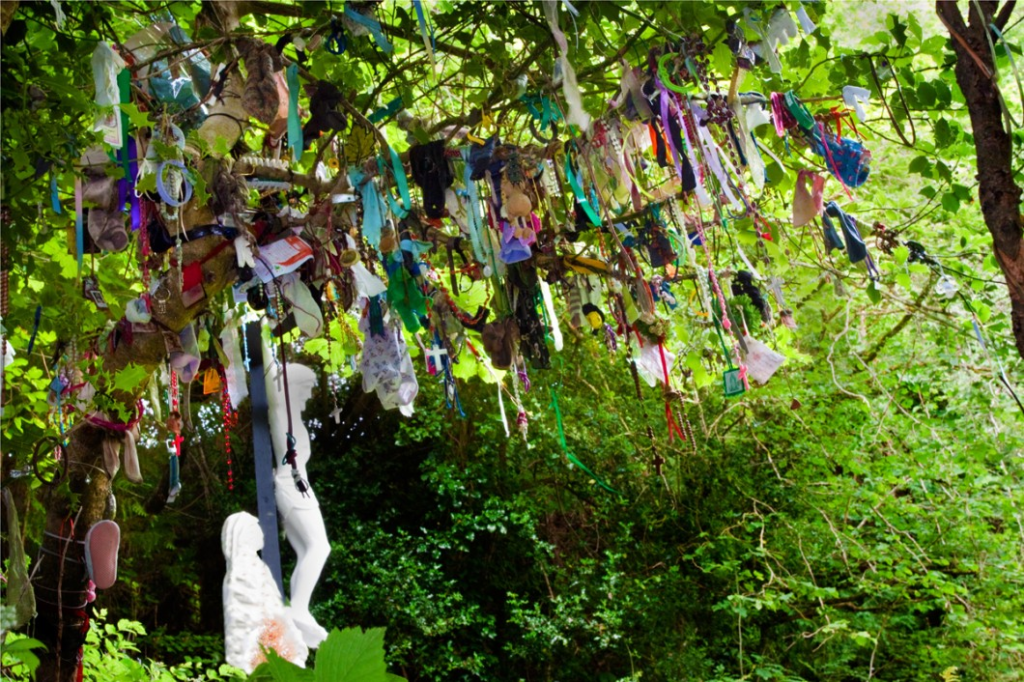
The hawthorn is also associated with Christian holy wells, where offerings are sometimes tied to the trees. Today, rag trees can be found throughout Ireland and Scotland, often near holy wells or other sacred sites. They are a tangible link to the ancient customs and beliefs of the Irish and Scottish people, and a reminder of the close relationship between the people and the natural world.

In pre-Christian times, they were used to mark sacred sites and were associated with nature spirits and fertility. However, rag trees have a long history in Irish folklore, and their use predates Christianity.

With the advent of Christianity, however, the practice of tying rags to trees became associated with saints and holy wells. People would tie rags to trees near the wells as an offering to the saint or deity, often seeking help with a specific problem or illness. It is also common for pilgrims to leave rosary beads, holy medals, or photos as offerings.
Left: The Well of the Crozier, Killbarron, Co. Kerry.
The Modern Influence of the Fairy Tree:
How Eddie Lenihan Saved the Latoon Fairy Bush
The importance of the hawthorn tree to Irish folklore and tradition was demonstrated in 1999, during the construction of a new motorway in County Clare. The proposed route would have meant the destruction of a hawthorn tree that was believed to be sacred to the fairies. The tree was situated on a “fairy path,” a route that the faeries were said to travel along.
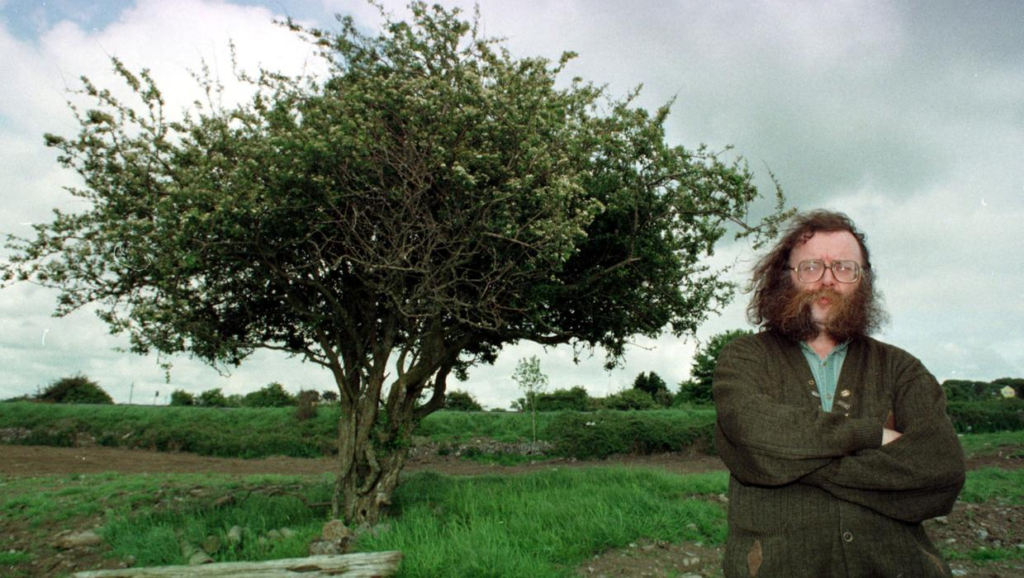
the proposed uprooting of a whitethorn tree to make way for a road project. (Independent.ie)
Renowned Irish storyteller and seanchaí, Eddie Lenihan, became involved in the campaign to save the tree. Lenihan learned from a local farmer that the tree had a long-established history with the faeries and that “lumps of green stuff” had been spotted on the hedge, indicating recent fairy battles. He warned that tragedy would strike if any disruption to the faeries were to take place.
Lenihan’s letter to the Irish Times was published and made its way into the New York Times, sparking an international frenzy surrounding the superstitions of the Irish people. Major news outlets such as CNN, the BBC, and French, and Swedish media all began to report on the story. The tree ultimately remained standing and became a comical tourist attraction, with people coming from far and wide to rub shoulders with some good old Irish superstition. The campaign to save the sacred hawthorn tree was a powerful demonstration of the deep respect and reverence that the Irish people have for their natural and cultural heritage.
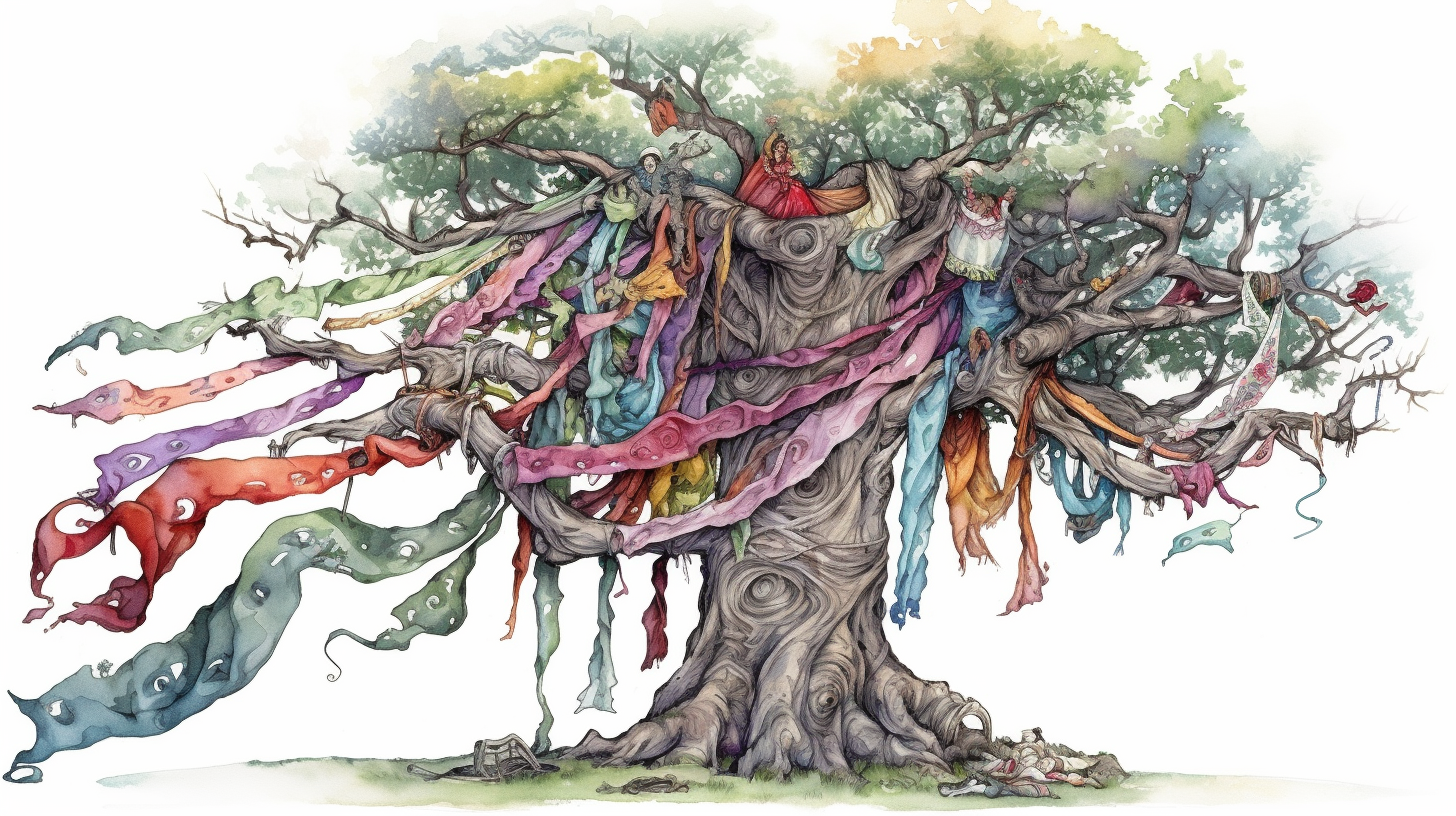
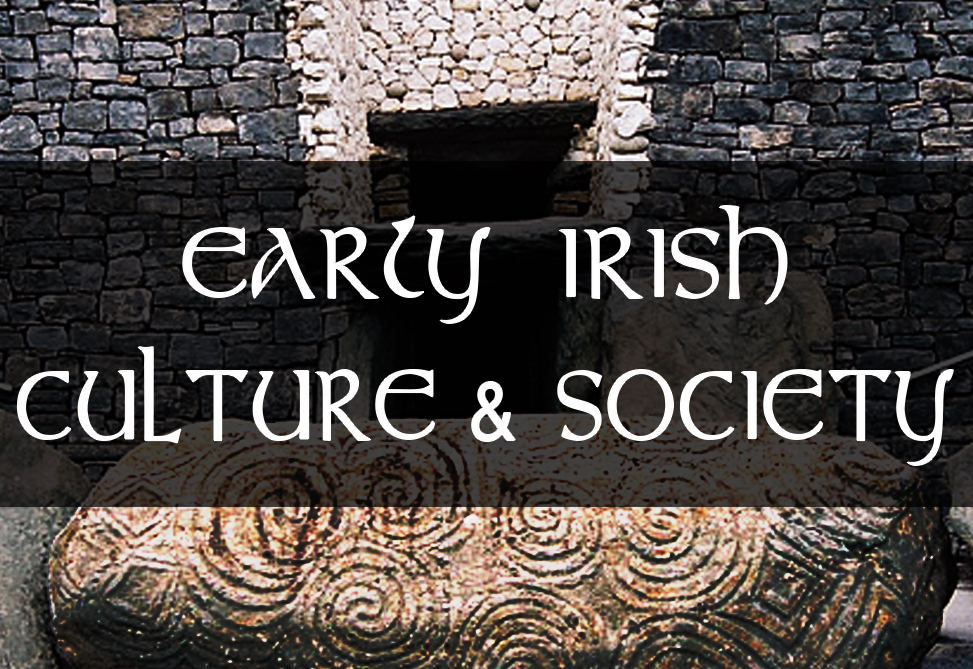
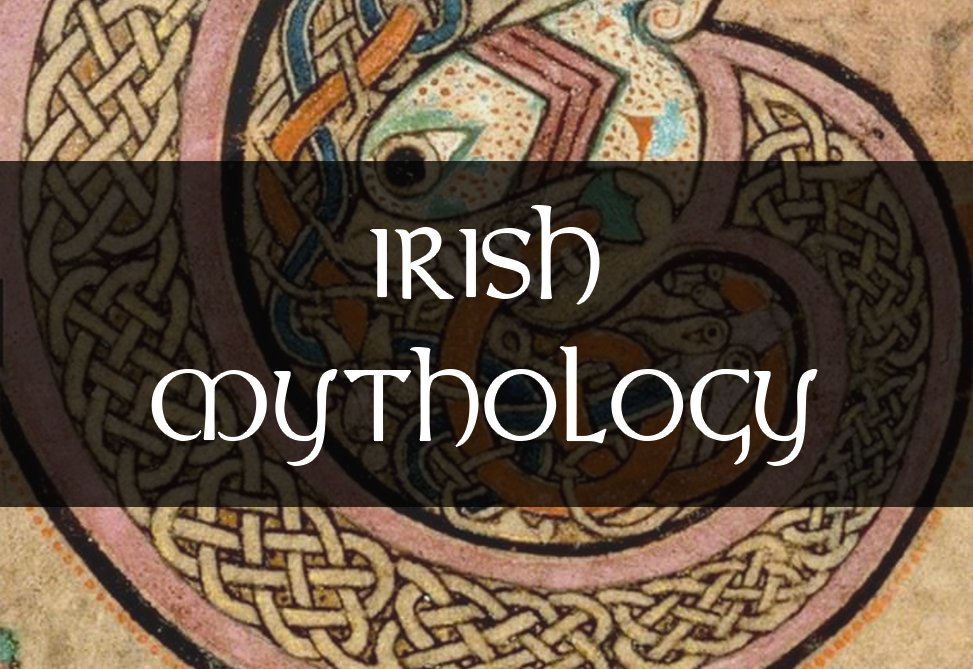
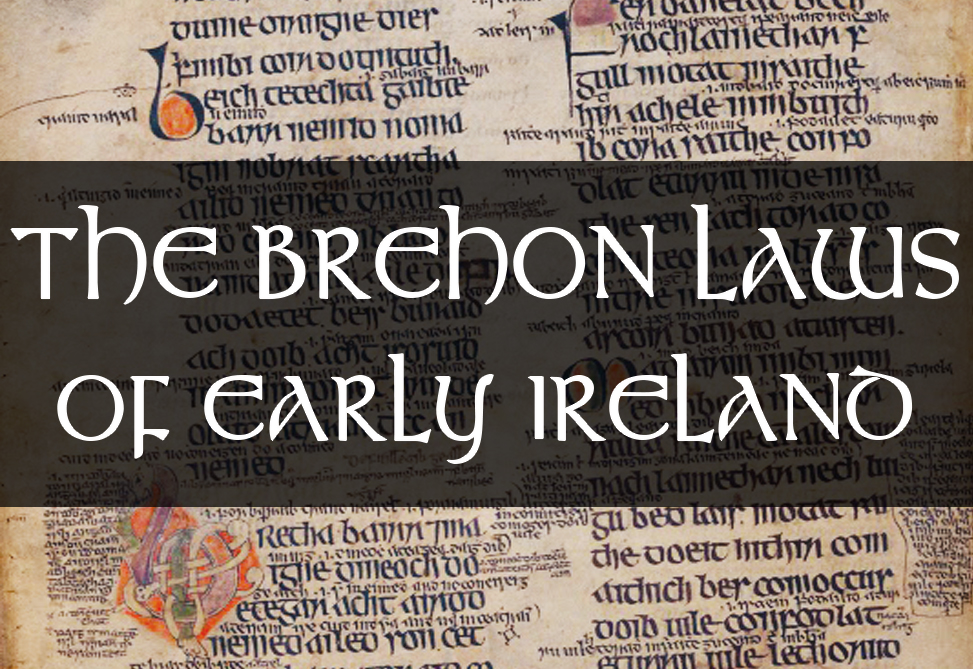
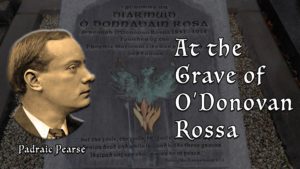

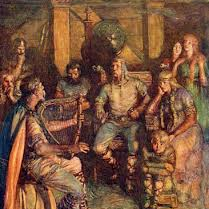
Pingback: The Flames of Tradition: Discovering the Eternal Secrets of Uisneach Hill and the Bealtaine Fire Festival - The Brehon Academy
Pingback: The Role of the Fairy Tree in Irish Culture - ConnollyCove
Pingback: Beneath the Hawthorn Tree: Unveiling Irish Folk Practices and Superstitions - ConnollyCove